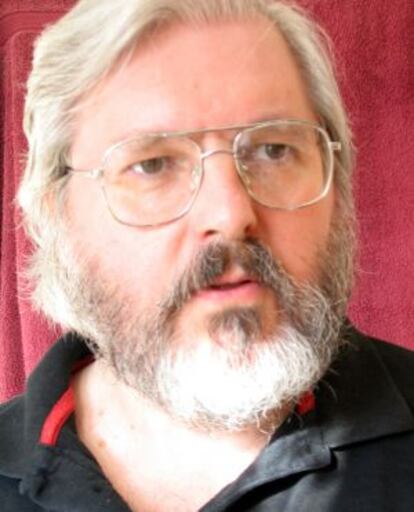Scotsman faces court case for removing Franco plaque
Clifford Torrents maintains he had the permission of the council to remove the monument


When Clifford Torrents, a 59-year-old Scotsman, bought a house with fine views in the picturesque Galician village of Ouviaño in 2009, he did not anticipate a future date with the Spanish courts.
The reason? Torrents removed a plaque next to a fountain bearing the insignia of the Spanish Falange and the legend “Francisco Franco reigning and D. José María López being mayor, this fountain was inaugurated on this day, 25-5-1953.”
The current mayor of the village, the Socialist José Manuel Braña, filed the police complaint. When the matter comes before a court, Braña will seek a judicial order to make Torrents pay to replace the fountain plaque.
“It’s ridiculous. But bearing in mind what happened to (Judge Baltasar) Garzón, and with former Valencian premier (Francisco) Camps and with the Ecce Homo, nothing surprises me in this country anymore,” said Torrents, the son of a Catalan Republican Civil War combatant, Juan Torrents, who later changed his name to John Colman to serve in the British army in World War II.
Torrents maintains that he reached a verbal agreement with a local councilor, also a Socialist, while the mayor was on holiday — “We shook hands and drank a toast; in my country that is like signing a contract” — to remove the plaque after the official told him the council could not because it didn’t have the funds to do so.
Braña, though, denies that Torrents had the permission of the council. “I told him we would study the matter. We didn’t know the opinion of the people who put up the plaque. This British gentleman has no business removing it without permission.”
Braña adds an important note: “I don’t speak English.” Neither does Torrents have much command of Spanish.
The trial, originally scheduled for Friday, September 20, had to be pushed back to the 25th because the translator could not attend.
The Scotsman does not entertain the notion that the matter has been lost in translation and recalls that before the last elections, Braña went door-to-door to ask residents what they would like for the village: “That the plaque be removed,” was Torrents’ reply, and from there the negotiations began. The mayor states that its removal has not gone down well with Torrents’ neighbors, of which there are exactly nine. In total, the 23 hamlets of Negueira de Muñiz, of which Ouviaño is one, contain 200 inhabitants. Some, Torrents claims, congratulated him for taking a hammer to the plaque.
“It is absurd, absurd,” he says. “I didn’t expect the mayor to thank me, but I didn’t expect this either. He wants to replace an illegal Francoist plaque with another illegal Francoist plaque!”
Torrents argues that the cost of the proceedings far outstrips that of the plaque. Unrepentant, he says that had he foreseen this, “I wouldn’t have bought my house there.”
His case is similar to that of José Gallego, a 72-year-old retiree from Aspe, Alicante. Gallego was arrested with paint pot in hand, descending a ladder after covering several Francoist plaques in the village church with red graffiti. He told the officer: “I’m not doing anything illegal. It’s illegal to leave them there because the Historical Memory Law says that they should all be taken down.”
Tu suscripción se está usando en otro dispositivo
¿Quieres añadir otro usuario a tu suscripción?
Si continúas leyendo en este dispositivo, no se podrá leer en el otro.
FlechaTu suscripción se está usando en otro dispositivo y solo puedes acceder a EL PAÍS desde un dispositivo a la vez.
Si quieres compartir tu cuenta, cambia tu suscripción a la modalidad Premium, así podrás añadir otro usuario. Cada uno accederá con su propia cuenta de email, lo que os permitirá personalizar vuestra experiencia en EL PAÍS.
¿Tienes una suscripción de empresa? Accede aquí para contratar más cuentas.
En el caso de no saber quién está usando tu cuenta, te recomendamos cambiar tu contraseña aquí.
Si decides continuar compartiendo tu cuenta, este mensaje se mostrará en tu dispositivo y en el de la otra persona que está usando tu cuenta de forma indefinida, afectando a tu experiencia de lectura. Puedes consultar aquí los términos y condiciones de la suscripción digital.








































